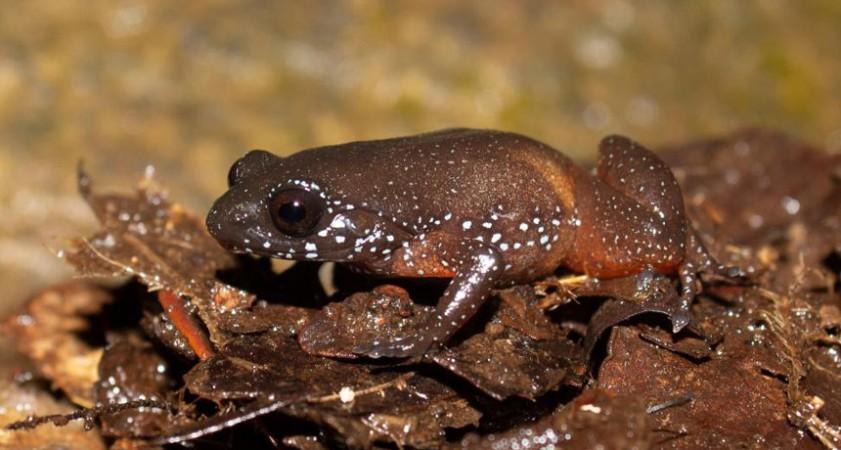
Indian scientists have discovered a starry dwarf frog that is believed to be an entirely new genus and species, while surveying reptiles at a height of 1,300 meters in India's southern Western Ghats in Kerala.
Palaniswamy Vijayakumar who was among the first to spot the new species one night in 2010, initially thought that it was another species of frog. To his surprise, it turned out to be an entirely new species and could even be a new family with a lineage traceable to ancient Gondwanaland period when the sub-continent was part of the African continent before drifting towards Asia.
The frog, which looked like any other frog, did not stand out as a different species, initially with its brown back, orange belly and starlike spots, which acted as camouflage against the dark hues and water droplets on the forest floor. It measured just 2 to 2.9 centimeters long that it "can sit on your thumb," said Vijayakumar Palaniswamy, a biogeographer at George Washington University in Washington, D.C.
"I had no clue I was holding onto a 50-million-year-old lineage," said Vijayakumar. "It's a unique, old lineage without any close relatives" said Vijayakumar, who is a member of the team that is working on to confirm through genetic analysis and anatomical comparisons to decide whether it belongs to a differently new species.
Named starry dwarf frog, the DNA analysis, anatomy and geographic distribution of it stunned the team in the lab when they realised that they had stumbled upon a new species altogether. The frog belonged to sole known species of a lineage dating back 57 million to 76 million years, said researchers.
Scientifically named Astrobatrachus kurichiyana, with a genus name that includes "astro" for the frog's bluish-white starlike dots, and species name refers to local Kurichiyan people in Kerala. The report was published in PeerJ.

















